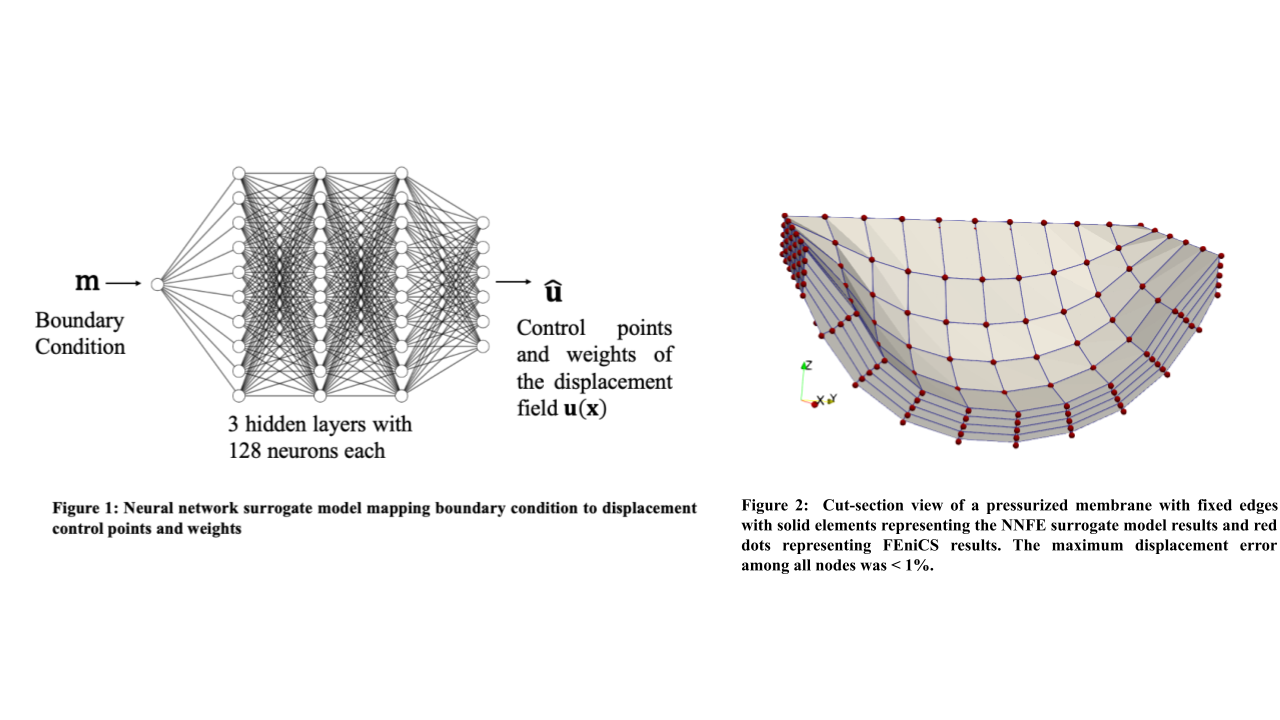Machine learning approaches for high-speed patient-specific modeling
High-fidelity cardiac models using attribute-rich finite element based models have been developed to a very mature stage. However, such finite-element based approaches remain time consuming, which have limited their clinical use. There remains a need for alternative methods for novel cardiac simulation methods capable of high-fidelity simulations in clinically relevant time frames. Neural networks, in their capacity as universal function approximators, can serve as a useful tool as ‘surrogate’ models for finite element simulations. Our group has developed an approach that couples a neural network to a differentiable finite element domain map to create a neural network finite element (NNFE) surrogate model. The neural network is directly trained using a potential function corresponding to the parametric PDE, and thus does not require any ‘training dataset’ in the form of experimental data or other simulation results. Although neural networks can be computationally expensive to train, a trained model takes a few seconds at most to provide simulations results. Thus, our approach effectively shifts the computational expense offline, allowing for rapid simulations in clinical settings. Such a model paves the pathway for bridging the gap between computational research and real clinical applications in this field.
